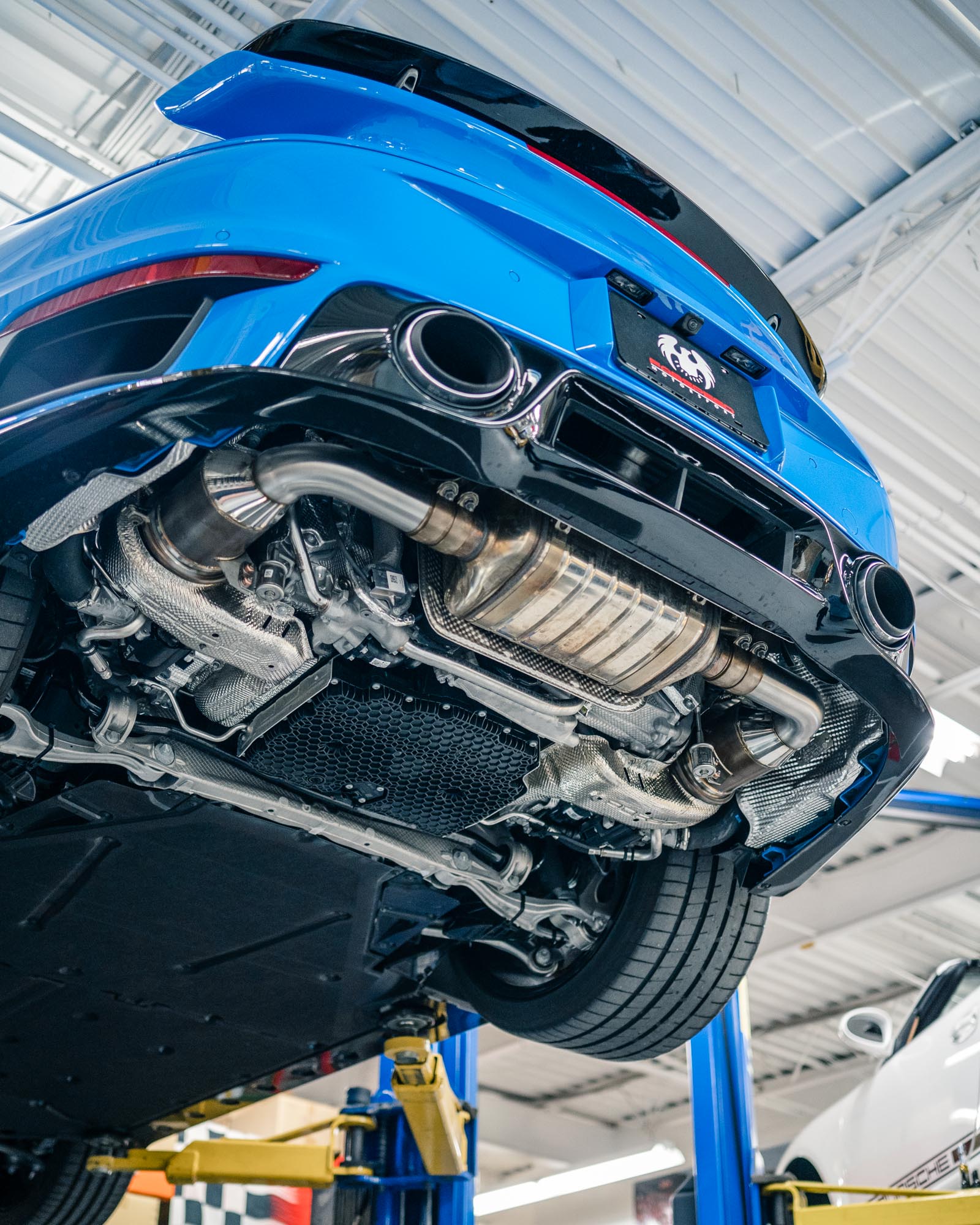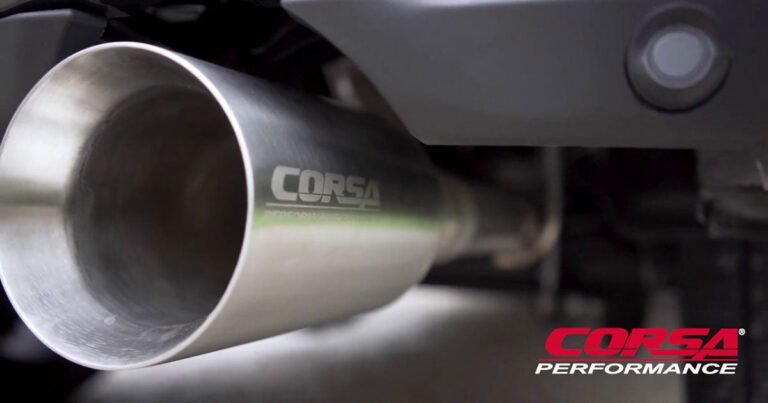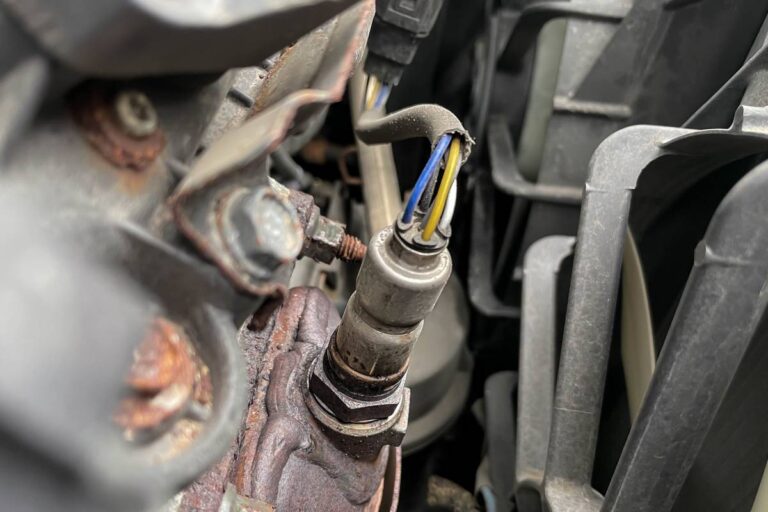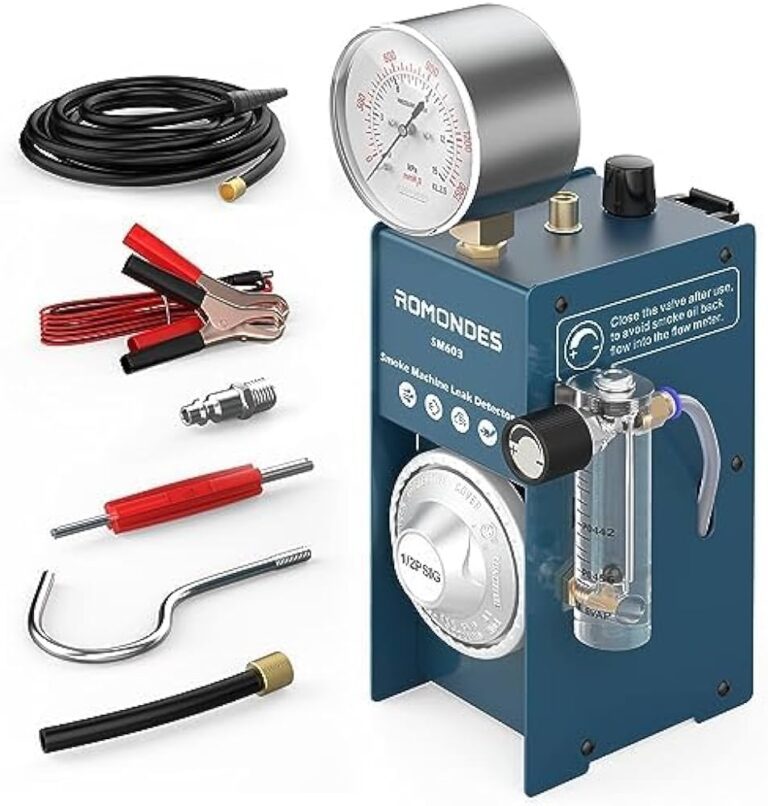What Does Catalytic Converter Do in a Car : Unleashing the Power of Your Engine
A catalytic converter reduces harmful emissions in a car’s exhaust system. It converts toxic gases into less harmful substances through a chemical reaction.
Introducing a catalytic converter in a car’s exhaust system is crucial for keeping the environment clean and meeting emissions regulations. By converting toxic gases produced during the combustion process into less harmful substances, catalytic converters significantly reduce harmful emissions. This device plays a vital role in reducing air pollution and protecting public health.
We will delve deeper into how catalytic converters work, their components, and their importance in maintaining the overall functionality of a car’s exhaust system. Understanding the role of a catalytic converter is essential for all vehicle owners, as it can impact emissions control and the overall performance of the vehicle.
What Is A Catalytic Converter?
What is a Catalytic Converter?
A catalytic converter is a crucial component of a car’s exhaust system. It is installed between the engine and the muffler and is responsible for reducing harmful emissions that can be released into the atmosphere.
Definition of a catalytic converter
A catalytic converter is an exhaust emission control device that contains a catalyst, which facilitates chemical reactions to convert harmful pollutants into less harmful substances.
Purpose of a catalytic converter
The main purpose of a catalytic converter is to mitigate the impact of pollutants, such as carbon monoxide, nitrogen oxides, and hydrocarbons, on the environment. By promoting chemical reactions, the catalytic converter transforms these harmful gases into carbon dioxide, water vapor, and nitrogen gas, which are much less harmful to the environment.
Importance of a catalytic converter in a car
A catalytic converter plays a crucial role in reducing air pollution and promoting cleaner air quality. It helps vehicles comply with emissions regulations and contributes to a healthier environment. Without a functioning catalytic converter, a car would emit higher levels of harmful pollutants, leading to increased air pollution and negative effects on human health.
How Does A Catalytic Converter Work?
A catalytic converter is a crucial component of a car’s exhaust system that helps minimize harmful emissions. It contains various internal components, including a catalyst, which is typically made of platinum, palladium, and rhodium. The catalyst facilitates chemical reactions that convert harmful gases from the engine into less harmful emissions.
Inside a catalytic converter, there are two main types of chemical reactions that occur: oxidation and reduction. In the oxidation process, harmful carbon monoxide (CO) and unburned hydrocarbons (HC) are converted into carbon dioxide (CO2) and water (H2O). The reduction process, on the other hand, converts nitrogen oxides (NOx) into nitrogen (N2) and oxygen (O2).
By harnessing these chemical reactions, the catalytic converter effectively reduces the emissions of harmful gases, helping to protect the environment and improve air quality. It plays a crucial role in ensuring that vehicles comply with emission standards and regulations.
Benefits Of A Catalytic Converter
The catalytic converter is an essential component of a car’s exhaust system that plays a crucial role in reducing air pollution and environmental impact. It achieves this by converting harmful gases, such as carbon monoxide, nitrogen oxides, and hydrocarbons, into less harmful substances through a catalytic reaction. This helps in keeping the air cleaner and minimizing the negative effects of vehicle emissions on the environment.
In addition to its environmental benefits, a catalytic converter also ensures compliance with emissions regulations imposed by local authorities. By filtering out harmful gases before they are released into the atmosphere, it helps vehicles meet the required emission standards. Failure to have a functioning catalytic converter can result in legal consequences, such as fines or penalties.
Furthermore, the presence of a catalytic converter in a car’s exhaust system can improve fuel efficiency and engine performance. The conversion of harmful gases into less harmful substances helps the engine run more smoothly and efficiently, leading to better mileage and overall performance.

Credit: www.badwinners.com
Enhanced Engine Power With A Catalytic Converter
A catalytic converter plays a crucial role in optimizing a car’s engine performance. It efficiently reduces harmful emissions while also enhancing engine power. One of the key aspects that contribute to engine efficiency is minimizing backpressure in the exhaust system. By reducing backpressure, a catalytic converter allows the exhaust gases to flow more freely, resulting in improved engine performance.
How does a catalytic converter minimize backpressure? It achieves this by using a carefully designed internal structure that promotes efficient exhaust gas flow. This structure consists of ceramic or metallic substrates coated with precious metals like platinum, palladium, and rhodium. These metals act as catalysts, facilitating the conversion of harmful gases into less harmful emissions.
By reducing backpressure, a catalytic converter helps increase horsepower and torque output. The improved flow of exhaust gases allows the engine to breathe better, resulting in enhanced combustion efficiency. This, in turn, leads to a more powerful engine performance, providing smoother acceleration and an overall exhilarating driving experience.
Protecting The Engine Components
A catalytic converter plays a crucial role in protecting the engine components of a car by filtering harmful substances and preventing engine damage. This essential component helps extend the lifespan of the engine and other related parts by reducing the risk of costly repairs and breakdowns.
Promoting Safety And Comfort
What Does Catalytic Converter Do in a Car:
The catalytic converter plays a crucial role in promoting safety and comfort for car passengers. One of its key functions is to prevent noxious odors and harmful fumes from entering the cabin. By effectively converting harmful gases like carbon monoxide, nitrogen oxide, and hydrocarbons into less harmful substances, the catalytic converter ensures a healthier driving environment for all individuals inside the vehicle.
Moreover, this essential component of the car’s exhaust system minimizes the risk of health issues caused by exhaust emissions. It has the ability to reduce the levels of pollutants released into the atmosphere, thus contributing to cleaner air quality and a sustainable environment. Thanks to the catalytic converter, passengers can breathe easier and enjoy a comfortable ride free from the harmful effects of exhaust emissions.
Signs Of A Failing Catalytic Converter
The catalytic converter is an essential component of a car’s exhaust system. It plays a crucial role in reducing harmful emissions and converting them into less harmful substances before they are released into the atmosphere.
Signs of a failing catalytic converter can vary, but there are common symptoms that can indicate a malfunctioning converter. These include a decrease in engine performance, reduced fuel efficiency, the presence of black smoke or a rotten egg smell from the exhaust, and illuminated warning lights on the dashboard.
Diagnosing potential issues with the catalytic converter requires the expertise of a professional mechanic. They can perform a diagnostic test to determine if the converter is functioning properly or if it needs to be replaced. Timely maintenance and replacement of a faulty catalytic converter are essential to prevent further damage to the engine and to ensure the vehicle remains environmentally friendly.
Recognizing Warning Signs
When it comes to the function of a catalytic converter in a car, it is essential to recognize the warning signs that indicate potential issues. One of the signs to watch out for is engine performance problems and reduced power output. If your car is experiencing a decrease in power when accelerating or having trouble maintaining consistent speeds, it could be a result of a faulty catalytic converter.
Unusual smells or exhaust emissions can also indicate a problem with the converter. A strong sulfur-like smell or the presence of black smoke coming from the exhaust could be signs of a failing catalytic converter.
Another indicator is the illumination of the check engine light and the presence of diagnostic trouble codes related to the catalytic converter. These codes can be obtained by using an OBD-II scanner, which can help identify the specific issue.
Testing And Inspection
Testing and Inspection
Conducting a visual inspection of the catalytic converter is an essential step in assessing its condition. Check for any physical damage, such as cracks, dents, or leaks. Inspect the converter for signs of overheating, such as discoloration or a melted appearance. Look for the presence of contaminants, including rust, oil, or coolant. These visual cues can indicate potential issues with the converter.
Performing emission tests is another way to assess the efficiency of the catalytic converter. By measuring the amount of pollutants in the exhaust gases, you can determine if the converter is effectively reducing emissions. High emission levels may indicate a malfunctioning converter that needs attention.
If you suspect that your catalytic converter is not functioning properly, it is crucial to consult a professional and get a proper diagnosis. They have the expertise and diagnostic tools to accurately evaluate the converter’s performance and identify any underlying problems.
Maintaining And Replacing The Catalytic Converter
In a car, the catalytic converter plays a crucial role in reducing harmful emissions and ensuring optimal performance. Regular maintenance is essential to keep the catalytic converter functioning properly. One way to maintain it is by regularly cleaning the converter if possible. This involves removing any build-up of dirt, grime, or carbon deposits that may accumulate over time. Cleaning the catalytic converter can help improve its efficiency and prolong its lifespan.
In some cases, the catalytic converter may become damaged or fail due to wear and tear or other issues. When this happens, it is important to replace the converter promptly to prevent further damage to the engine and to ensure compliance with emissions regulations. Replacing a damaged or failed catalytic converter typically involves removing the old converter and installing a new one that is compatible with the vehicle’s make and model.
Proper Maintenance Practices
Proper Maintenance Practices:
- Use the correct fuel and engine oil for your car to ensure optimal performance and minimize the risk of damaging the catalytic converter.
- Avoid excessive idling and aggressive driving as these can cause the catalytic converter to overheat and fail prematurely.
- Get regular inspections and servicing to identify any issues with the catalytic converter early on. This allows for timely repairs or replacements, preventing further damage to the converter and other engine components.
Understanding Replacement Options
The catalytic converter plays a crucial role in a car’s emission control system, converting harmful pollutants into less harmful substances before they are released into the atmosphere. Understanding replacement options is important when replacing a faulty catalytic converter. When it comes to replacement options, one can choose between OEM and aftermarket catalytic converters. OEM catalytic converters are made by the original equipment manufacturer and are designed to fit specific car models. They are generally more expensive but offer a guaranteed fit and performance. On the other hand, aftermarket catalytic converters are produced by third-party manufacturers and are usually more affordable. However, they may not always meet the same quality standards as OEM converters. It is also important to consider legal requirements and regulations when replacing a catalytic converter. Different regions have specific guidelines regarding emissions standards and catalytic converter replacement. Seeking professional assistance for installation ensures proper fitment and compliance with regulations.
Frequently Asked Questions For What Does Catalytic Converter Do In A Car
What Is A Catalytic Converter In A Car?
A catalytic converter is a device installed in a car’s exhaust system that converts harmful pollutants in the exhaust gases into less harmful substances through a chemical reaction. It plays a crucial role in reducing air pollution and ensuring the car meets emission standards.
How Does A Catalytic Converter Work?
A catalytic converter works by using a catalyst to speed up chemical reactions that convert harmful gases like carbon monoxide, nitrogen oxides, and hydrocarbons into less harmful substances like carbon dioxide, water vapor, and nitrogen. The catalyst inside the converter facilitates these reactions without being consumed itself.
Why Is The Catalytic Converter Important For A Car?
The catalytic converter is important for a car because it helps reduce harmful emissions, such as carbon monoxide, nitrogen oxides, and hydrocarbons. It plays a vital role in protecting the environment by converting these pollutants into less harmful substances before they are released from the vehicle’s exhaust system.
Can A Car Run Without A Catalytic Converter?
Technically, a car can run without a catalytic converter. However, removing or bypassing the catalytic converter is illegal in most countries due to increased pollution levels. Additionally, running a car without a catalytic converter may negatively impact engine performance and cause the vehicle to fail emission tests.
Conclusion
To sum it up, a catalytic converter plays a crucial role in a car by reducing harmful emissions, converting them into less harmful gases. This device helps to maintain a cleaner environment by minimizing air pollution. By understanding the functioning and significance of this component, car owners can ensure their vehicle runs efficiently while being environmentally conscious.
So, next time you hear about catalytic converters, you’ll know why they are such an essential part of your car.








